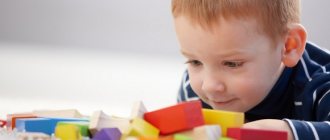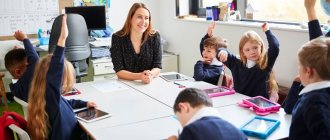Mnemonics for beginners is a system of various methods that helps to remember information using various associations and is used in teaching children from preschool age. This technique uses previously acquired knowledge to create a chain of connections. Thanks to such logical series, you can easily remember information that is difficult to perceive.
There are many mnemonic techniques. For example, Cicero’s method is based on spatial imagination, while Aivazovsky’s method works by training visual memory. Number sequences, foreign words or complex terms are easier to remember with the help of consonant or familiar words and numbers.
In a time when there was no written language, ancient priests and storytellers had to memorize enormous amounts of information. With the advent of the first texts put on paper, the art of using mnemonics did not lose its relevance, because the raw materials for writing them were very expensive. Even in Ancient Greece, notes were made using mnemonics. The art of associative memorization was mastered by the monks of the Middle Ages. At all times, people who could quickly remember and store useful and interesting knowledge in their heads were valued.
Pros and cons of mnemonics
Mnemonics are actively used in teaching children. For example, one of the most famous phrases for studying the sequence in the color spectrum is “Every Hunter Wants to Know Where the Pheasant Sits.” It is she who helps to accurately tell how a rainbow “works.”
The role of methodology in the development of children:
- helps you remember information quickly and for a long time;
- improves memory and attentiveness;
- develops speech, expands vocabulary and horizons, teaches how to pronounce sounds and words correctly;
- forms logical and imaginative thinking;
- improves imagination, intellectual and creative abilities;
- develops character, teaches sociability, helps to overcome isolation and shyness.
When used correctly, mnemonics have very few disadvantages.
- At the initial stage of use, children have a small vocabulary, so it can be difficult for them to work using this method.
- There is no need to abuse the method and use it in cases where it is too easy to understand the properties and remember the signs - this hinders the child’s development.
- Sometimes it is not possible to use the technique. For all-round development, it is necessary to teach the child to learn information mechanically; this skill will also be useful in the future.
The human brain consists of two hemispheres. The left is responsible for logic and speech, and the right helps to perceive different colors and form images using the imagination. When using mnemonic techniques, both halves are activated simultaneously. As a result, thought processes bring maximum benefit in the form of acquired knowledge.
Development of fantasy
In preschool educational institutions (DOU), mnemonic tables can be used to develop thinking and imagination. You should start with simple signs that depict objects denoted by one word or phrase. There are 4 signs in total. Then the task becomes more complicated. The teacher should arrange the cards in the form of a square. Following the path of the square, children must compose a short story of two or three sentences. At first, you can ask children leading questions. Then we can offer mnemonic tables with the help of which a whole story is compiled. Also, using these tables you can simplify the task of memorizing a story or poem.
At first, the teacher compiles mnemonic tables. When children have sufficiently grasped the essence of mnemonics, they can begin to be introduced to the process of creating tables.
From what age is it used?
Teaching children using mnemonics can begin from a very early age. Getting to know exercises for children starts with simple techniques.
First, they use mnemonic squares, which can be introduced to children at the age of three. In the first lessons, children study simple images that represent one word, phrase or simple phrase. You can place pictures in a square and learn poems with movements.
Later, at 4-5 years old, children become familiar with mnemonic tracks - systematized pictures of four drawings. With the help of such images, the concept of sequences is formed. Thanks to group illustrations, you can easily tell a short story, remember the steps of washing your hands, the process of dressing or washing your face.
Children aged 6-7 years begin to study mnemonic tables that allow them to perform more complex actions:
- retell various works;
- memorize poems and complex words;
- guess and make riddles;
- find rhymes for words;
- invent fairy tales or stories;
- distribute objects into groups according to certain characteristics;
- study numbers;
- become familiar with the basic rules of life safety and behavior in various places, and methods of self-service.
Children learn to express their thoughts correctly and beautifully and use new words in speech. Attention and intelligence develop, the ability to highlight the main thing and compare improves.
Project “Use of mnemonics for the development of speech of younger preschoolers”
Municipal Autonomous Preschool
Educational institution
“Kindergarten “ IT
World”
Project
“The use of mnemonics for the development of speech in younger preschoolers”
Perm
2016
Relevance.
Speech development is one of the most important acquisitions of a child in preschool age and is considered in modern preschool education as the general basis for raising and educating children. Today, figurative speech, rich in synonyms, additions and descriptions, in preschool children is a very rare phenomenon. There are many problems in children's speech:
- monosyllabic speech consisting of simple sentences,
- inability to construct a common sentence grammatically correctly;
- insufficient vocabulary;
- use of non-literary words and expressions;
- poor dialogical speech: children are unable to formulate a question competently and clearly, or construct a short or detailed answer;
- inability to construct a monologue: for example, a plot or descriptive story on a proposed topic, retelling the text in your own words;
- low level of speech culture skills: inability to use expressiveness, regulate voice volume and speech rate, poor diction;
- lack of logical justification for one’s statements and conclusions.
Therefore, I was faced with the task of teaching children to express their thoughts coherently, consistently, and grammatically correctly, and to talk about various events from the life around them. How to shape a child’s speech, fill it with a large palette of words, beautiful phrases, euphonious phrases? How to help a child feel the rhythm of speech, the melody of words, and experience the content of the speech he hears? How to promote the development of a child’s emotional and sensory sphere and help him learn communicative speech?
While studying traditional methods for speech development (O. S. Ushakova, E. M. Strunina, A. I. Maksakova), my attention was drawn to the technology of using mnemonic tables for the development of speech in preschoolers.
Mnemonics is a system of methods and techniques that ensure effective memorization, storage and reproduction of information. In preschool age, visual-figurative thinking predominates, so memorization is mainly involuntary: children better remember events, objects, facts, phenomena that are close to their life experience through images, rather than through words. When teaching children, it is quite justified to use creative methods, the effectiveness of which is obvious, along with generally accepted ones.
Thanks to the use of this technology, children’s vocabulary is enriched, dialogue skills are formed, monologue speech, attention, memory are developed, prerequisites for self-learning are formed, and perfect perception and memorization skills are laid.
Objective of the project:
development of all components of children’s oral speech (lexical side, grammatical structure of speech, pronunciation side of speech: dialogical and monologue forms) using mnemonic tables.
Tasks
- To develop in children the ability, with the help of graphic analogy, as well as with the help of substitutes, to understand and tell familiar fairy tales and poems using a mnemonic table.
- Develop coherent and dialogic speech.
- Teach children correct sound pronunciation.
- To develop in children mental activity, intelligence, observation, the ability to compare, and identify essential features.
- To develop mental processes in children: thinking, attention, imagination, memory (various types).
- Organization of joint activities of children and parents.
Project characteristics:
integration of the areas “Cognition”, “Communication”, “Reading fiction”, “Artistic creativity”, “Socialization”, “Music”.
Project participants:
educators, students, music director, parents, psychologist-teacher.
Project duration:
long-term (01.10.2016-30.05.2017)
Project implementation stages:
Stage 1 – Preparatory (01.10.2016-30.11.2016)
Tasks:
- Selection and study of methodological literature on the topics: “Speech development of preschool children” and “Mnemonics”.
- Primary diagnosis of the level of speech development of children of primary preschool age.
- Introduce children to the basic principles of coding: teach children to replace key words in sentences with symbols.
- Questioning of parents “Speech development of the child.”
Stage 2 – Main (01.12.2016-28.02.2017)
Tasks:
- Children's work with mnemonic tables: familiarization (examination of tables, images, encoding and decoding information);
- Work on speech development: enrichment of vocabulary, formation of grammatical structure, development of dialogical and monologue speech of children, activation of expressiveness of speech.
- Teaching children correct sound pronunciation.
- Conducting consultations, open classes, round tables and workshops for parents.
Stage 3 – Final (03/01/2017-05/31/2017)
Tasks:
- Repeated diagnostics of the level of speech development of children of the second younger group.
- Generalization and analysis of diagnostic results.
- Analysis and generalization of project implementation experience.
Estimated results, results of the project:
- Mastery of the components of oral speech: lexical, grammatical, phonetic, intonation, coherent (dialogical and monological) in various forms and types of children's activities.
- Development of children's free communication skills both with peers and with adults.
- Formation of love for the native language.
- Development of mental functions: memory, attention, speech.
Stages of implementation of the project “ Use of mnemonic tables for the development of speech in preschool children .
| Stage s | Stage 1 – preparatory, planning and prognostic (01.10.2016-30.11.2016) Objectives: Selection and study of methodological literature, primary diagnosis of speech level, acquaint children with the basic principles of coding; parent survey “Child’s speech development” | Stage 2 – main (01.12.2016-28.02.2017) Tasks: Working with mnemonic tracks. mnemonic squares; work on speech development; teaching children correct sound pronunciation; conducting educational work with parents; | Stage 3 - final (01.03.2017-30.05.2017). Objectives: diagnostics of the level of speech development of children; generalization and analysis of diagnostic results; analysis and synthesis of project implementation experience |
| Work with children | 1.diagnostics of the level of speech development of children of primary preschool age. 2. Compiling an album of signs - coding symbols. | 1. Retelling Russian folk tales using ready-made mnemonic tables. 2. Learning poems using mnemonic tables. 3. Compilation of narrative and descriptive stories using mnemonic tables. | 1diagnostics of the level of speech development of children. 2. Individual work with children. |
| Working with parents | 1. Questioning parents. 2. Parent meeting “Speech development of children 3–4 years old.” 3. Consultations for parents: "Development of speech of preschoolers in games." "Finger gymnastics for kids." | Consultations for parents: "Learning poetry with children" “Development of a child’s personality in communication,” “The relationship between the development of fine motor skills and speech development in children.” | 1. Parent meeting “What a 4-year-old child should know” |
Calendar planning of work with children for the 2016/2017 school year. year
| Month | Event | Responsible |
| October | 1. Compiling an album of signs - coding symbols on the topic “Vegetables”, “Fruits” 3. Didactic game “Find the extra object”, “Find the extra object”, “Shape”, “Color”. 4.Articulation gymnastics. Exercises "Smile". "Proboscis". 5. Finger gymnastics. Exercise “Our Family”. 6. Breathing exercises. Exercises “Let’s blow on leaves”, “That’s how big we are!” | Teacher, pupils |
| November | 1. Compiling an album of signs - coding symbols on the topic “Pets”. "Wild animals". Drawing up a mnemonic track for the nursery rhyme “Like our cat.” 2. Educational games 3.Articulation gymnastics. Exercises “The house opens”, “Curious tongue”. 4. Finger gymnastics. Exercises “Palms on the table”, “Palm - fist”. 5. Breathing exercises. Exercises “Clock”, “Pipe”. | Teacher, students, |
| December | 1. Compiling an album of signs - coding symbols on the topic 2. 3.Articulation gymnastics. Alternation “Proboscis – Smile – House opens.” 6. Finger gymnastics. Exercises “Fingers say hello”, “Little man”. 7. Breathing exercises. Exercises “Snowflakes”, “Clock”. | Teacher, students, |
| January | 1. Compiling an album of signs - coding symbols on the topic 2.Use of signs - symbols when solving riddles. 3. Didactic game “Find the extra object.” 4. Compiling a mnemonic track for the children's song "". 5. Articulation gymnastics. Alternation “Proboscis – Smile – House opens.” 6. Finger gymnastics. “Little Man”, “Boy – Thumb”. 7. Breathing exercises. Exercises “Snowflakes”, “That’s how big we are!” | Teacher, students, |
| February | 1. Compiling an album of signs – coding symbols on the topic “Natural Phenomena”. 2. The use of signs - symbols when compiling mnemonic tracks in a corner of nature. 3. Didactic game “Find out by description.” 4. Articulation gymnastics. Exercises “Curious tongue”, “Frog”. 5. Finger gymnastics. Exercises “Goat”, “Little Goats”. 6. Breathing exercises. Exercises "Pipe". "Flag". | Teacher, students, |
| March | 1. The use of signs - symbols when compiling mnemonic tracks in a corner of nature. 2. Drawing up a mnemonic track on the topic “Signs of Spring.” 3. Didactic games “Find out by description”, “Find the extra object”. 4. Articulation gymnastics. Exercises “Tongue greets the chin”, “Tongue greets the upper lip”. 5. Finger gymnastics. Exercises “Glasses”, “Trees”, “Our Family”. 6. Breathing exercises. Exercises “Let’s smell a flower”, “How mice squeak”. | Teacher, students, |
| April | 1. Drawing up a mnemonic track on the topic “We are planting a vegetable garden.” 2.Use of signs - symbols when solving riddles. 3.Work on word formation. Didactic game “Big - small”. 4. Articulation gymnastics. Exercises “Monkey”, “Bulldog”. 5. Finger gymnastics. Exercises “Flag”, “Squirrel”. 6. Breathing exercises. Exercises “Turnabout”, Birdie”. 7. Development of fine motor skills of the hands. Exercises “Pick a bean”, “Lacing”. | Teacher, students, |
| May | 1. The use of signs - symbols when compiling mnemonic tracks in a corner of nature. 2. Drawing up a mnemonic table for the Russian folk tale “Bull - tar barrel.” 3. Didactic game “Find out by description.” 4. Articulation gymnastics. Exercises “Fat people”, “Skinny people”. 5. Finger gymnastics. Exercises “Birds”, “Nest”, “Flower”. 6. Breathing exercises. Exercises “Smell a flower”, “Bird”, “Blow a bubble”. 7. Development of fine motor skills of the hands. Exercises “Tear a piece of paper”, “Lacing”, games with mosaics. | Teacher, students, |
Project self-analysis.
At the beginning of the school year, we conducted diagnostics of children on speech development. The results of diagnostic data showed: 80% of children with low development of coherent speech. The children could not compose a story based on the picture without the help of an adult, they found it difficult to retell a familiar fairy tale, they had difficulty remembering and reciting poems by heart, there was no expressiveness and intonation when reading poems and retelling them, the children’s speech sounded monotonous and intermittent, since there were no words in the sentence coordinated, the sequence of presentation of the plot was often lost. A very poor vocabulary, only 16% of children have an average level of vocabulary development.
Therefore, I was faced with a goal - to teach children to express their thoughts coherently, consistently, and grammatically correctly, to talk about various events from the surrounding life, to expand and enrich their vocabulary. To achieve this goal, the following tasks were identified:
- Conduct an analysis of methodological literature on this topic.
- Create a developmental environment in the group.
- Involve parents in work in the chosen direction.
While studying traditional methods for speech development (O. S. Ushakova, E. M. Strunina, A. I. Maksakova), my attention was drawn to the non-traditional technology of using mnemonic tables for the development of speech in preschoolers. Mnemonics in preschool pedagogy are called differently: V.K. Vorobyov - with sensory-graphic diagrams, T. A. Tkachenko - with subject-schematic models, V. P. Glukhov - with blocks-squares, L. N. Efimenko - with a scheme for composing a story. The content of a mnemonic table is a graphic or partially graphic representation of fairy tale characters, natural phenomena, some actions, etc. by highlighting the main semantic links of the story’s plot. The main thing is to convey a conventionally visual diagram, to depict it in such a way that what is drawn is understandable to children. A mnemonic table is a diagram that contains certain information.
In early preschool age, children’s speech is situational in nature and therefore it is important to induce speech activity during this period, otherwise speech will lag behind in its development. In preschool age, visual-figurative thinking predominates, so memorization is mainly involuntary: children better remember events, objects, facts, phenomena that are close to their life experience through images, rather than through words. Therefore, the work on this project was structured and carried out taking into account the diagnostics and developmental characteristics of children of primary preschool age. Like any technique, work using mnemonics is built from simple to complex:
- teach children to replace key words in sentences with symbols; sketch objects and natural phenomena with symbols;
- independently, with the help of signs and symbols, fill out the model diagram as a retelling plan;
- consolidate the studied material by repeatedly repeating the story based on a previously drawn up model diagram.
Therefore, I began my work by compiling an album of signs - coding symbols. When composing signs - symbols, children learned to identify the essential features of a given object. Together with the children, we made up colored signs - symbols (mnemonic squares), since children quickly retain individual images in their memory: a fox is red, a mouse is gray, a Christmas tree is green, etc. Our album includes the following topics: “Wild and domestic animals ”, “Natural Phenomena”, “Vegetables and Fruits”, etc. When solving riddles, children could easily show the answer in the form of a sign - a symbol and explain the chosen sign. We learned to use signs and symbols when creating mnemonic tracks in a corner of nature. The table-drawing was placed in a visible place in the group and during the day the children could tell the text to each other if they wished. The children became more and more active. Joint work on compiling mnemonic tables developed dialogic speech in children. Vocabulary has become more active. Speech became brighter and richer. Using mnemonic tables, they compiled descriptive stories about toys, dishes, clothes, vegetables and fruits, birds and animals. These diagrams helped children determine the main properties and characteristics of the object in question and establish the sequence of presentation of the identified characteristics. It should be noted that the children experienced some difficulties, since it was difficult to follow the proposed mnemonic table plan. Very often the first stories turned out to be very sketchy. Therefore, tasks to activate and enrich the vocabulary were introduced into the software content of each mnemonic table. In all classes and routine moments, she included speech didactic games and entertaining exercises: phonetic, lexical, grammatical, games with words and movement, used board and printed games that helped children learn to classify objects, develop speech, visual perception, imaginative and logical thinking, attention, self-testing skills. I started some games and activities with children with articulation exercises, pronouncing all kinds of tongue twisters, tongue twisters, rhyming lines for the development of the speech apparatus. Children were involved in such activities as: learning poems and songs, nursery rhymes and jokes, active verbal games, round dances, finger games, examining and describing toys, writing short stories based on plot pictures, and puppet theater. I worked on developing the movements of the fingers and the entire hand during morning exercises, GCD, and in joint activities in the morning and evening. I tried to select the exercises so that they contained more varied finger movements. The texts of the exercises are rhyming tips for given movements. They easily fall on the ears of children and set them up to play. With the help of poetic rhythm, pronunciation is improved, correct breathing is established, a certain tempo of speech is practiced, and speech hearing develops. The work carried out had a positive impact on the dynamics of speech development in children (Graph No. 2). The low level of speech development, according to all diagnostic criteria, decreased by 60% on average. The children's vocabulary became more active and expanded, and they began to want to retell fairy tales, read poetry not only for their friends and comrades, but also to perform in front of adults and small audiences. Pupils have become more attentive, observant, they notice and correct mistakes in the speech of their comrades, they try to give complete answers to adults’ questions, establishing cause-and-effect relationships. With great desire, the guys share their impressions of their weekends and holidays.
At the preliminary stage of the project, I conducted a survey with parents on the topic “Speech development of the child” (Appendix 1 a). After analyzing the answers, I came to the conclusion that this problem is of great interest to parents. When answering the questionnaire, parents indicated the work being done on this topic at home, they were very interested in how speech development classes are conducted in kindergarten, and what games and exercises develop children’s speech. Based on this, the main tasks in working with parents were identified:
- involvement of parents in the process of children's speech development;
- familiarizing parents with techniques and methods for developing children’s speech;
- creation of a speech subject-development environment at home.
For joint activities with parents, I developed a work plan. .The planning made allows us to cover the most important areas of speech development in preschoolers. Throughout the project, parent meetings are planned on the problem of developing coherent speech in children in all age groups, including consultations with specialists, individual conversations, recommendations to parents in the form of memos, and the release of travel folders. By selecting theoretical and practical material on speech development, I tried to interest them and, through joint efforts, achieve fruitful work in this direction.
Conclusion.
Thus, systematic work on the formation of coherent speech in children using non-traditional techniques and methods, didactic games and exercises, entertaining material, visual aids, and joint work with the students’ parents produces results. Summing up the results of the current year’s work on this project, I consider the use of mnemonic tables for speech development to be a priority in the educational process. K. D. Ushinsky wrote: “Teach a child some five words unknown to him, and he will suffer in vain over them, but associate twenty such words with pictures - and the child will learn them on the fly...” Teaching children for me is an exciting activity, but also labor-intensive. Conducting such classes requires preliminary preparation in the selection of speech material, games, and the production of visual aids. But when you use something new and interesting in your work, you get carried away, and, accordingly, you captivate the children, and when this activity brings a tangible, visible result, it’s doubly interesting and exciting. The sooner we teach children to tell or retell using the method of mnemonics, the better we will prepare them for school, since coherent speech is an important indicator of a child’s mental abilities and his readiness for school.
I plan to continue working on this project in the future.
Features of application
You can achieve results during mnemonics classes if you follow the basic rules for using the technique.
- Subsequence. You cannot start classes with difficult tasks. First they work with mnemonic squares, single images, then with mnemonic tracks and mnemonic tables.
- Rationing. Children are not shown more than two tables per day, and the number of images in each block should be no more than 9 pieces. Too much information is difficult for a child to absorb, so classes will be ineffective.
- Colorfulness. The pictures should interest the child in their appearance. They use bright colors, rich and expressive images. Tables in black and white will not be able to attract the attention of children and have the desired impact; they can only be used for children of older preschool age.
- Emotionality. Children should feel the positive energy of such activities.
- Diversity. Pictures or series of images for one lesson should be on different topics. Guys will quickly lose interest in the same type of training. It is also advisable to select tables that require different actions. For example, the first pictures help to remember the sequence of food intake, and the next group helps to tell about how insects move.
- No coercive measures: just a game. Classes can only be conducted when children are involved in the process with pleasure and interest. Everything should happen in a playful way. If the children's attention wanes, it is better to stop the lesson and continue at another time.
It is enough to adhere to these simple principles to achieve maximum learning results.
Historical examples of phenomenal abilities
Vivid examples in history who had a brilliant ability to remember were Julius Caesar and Alexander the Great, who knew about 30,000 of all their soldiers by name and face.
The great Mozart, having once heard the polyphonic spiritual composition “Allegri” in the Vatican, wrote down exactly the same copy of the work overnight, note for note! But Themistocles knew every inhabitant of Athens by name. And there were at least 20 thousand of them. And modernity can boast of possessing unique memories.
For example, Kim Peek, the prototype of the main character of the film “Rain Man,” had a unique memory. He could remember up to 98% of all information he read. Moreover, Kim could simultaneously read the right page with his right eye and the left page of a book spread with his left eye. But the unique chess players Paul Morphy and Paul Sens could play several games at once and store in their memory all the past and upcoming moves of each.
A simple operator in Tasmania working in a help desk can recite more than 128 thousand telephone numbers and exact addresses of subscribers by heart.
But work on memorization is based on a simple technique - this is associating an object with an image, emotions, sounds and even smells or taste characteristics. Children perceive all this especially acutely. Their memorization works unconsciously; they absorb everything that they saw or heard somewhere. And the puzzled parents then rack their brains: “Where could my baby have picked up such a thing? After all, at home everything is completely different with us.” Therefore, such a feature of perception should be turned, as they say, in a direction that is convenient and necessary for you and me!
The earlier the better
I, of course, do not want to say that all of the above examples of human capabilities became famous only thanks to mnemonic exercises, but, nevertheless, the use of these seemingly simple associative cards with pictures should begin to be used according to the principle, the sooner the better! Moreover, in addition to the memorization process, they help the child:
develop imagination,
improve attentiveness and perseverance,
develop logical thinking,
for speech development,
perceive information in a simple, interesting and unobtrusive form.
And so let's sum up the first result, mnemonics is a kind of art of memorization, a technology that, by the way, got its name thanks to the ancient Greek patroness of memory Mnemosyne, connecting information with visual images. Accordingly, mnemonics involves the use of images on cards, in books, drawn on paper or in electronic form. Even the well-known alphabet with pictures is a clear example of mnemonics. Remember when you were a child, because the above book aroused interest only thanks to the colorful illustrations. Kids themselves don’t understand that when they look at the pictures in the alphabet, they automatically memorize the alphabet!
What about the usual pictures on children's lockers? Yes, yes - this is also a mnemonic technique used within the walls of kindergartens a long time ago. The kid remembers that it is on his locker that a car, doll, ball or bunny is drawn and over time he automatically finds things on his own, without the help of adults.
Not only teachers of children's educational institutions, but also parents should be involved in working with mnemonics. And then, perhaps, it will be your child who will join the list of owners of a unique memory.
To get started with developmental activities, use ready-made teaching materials. And I will be happy to bring those that help me!









